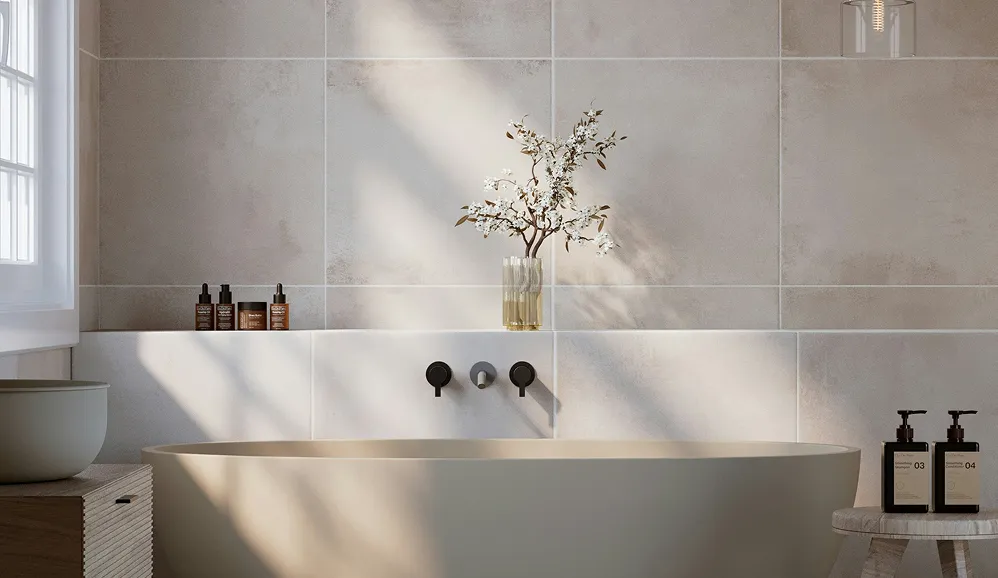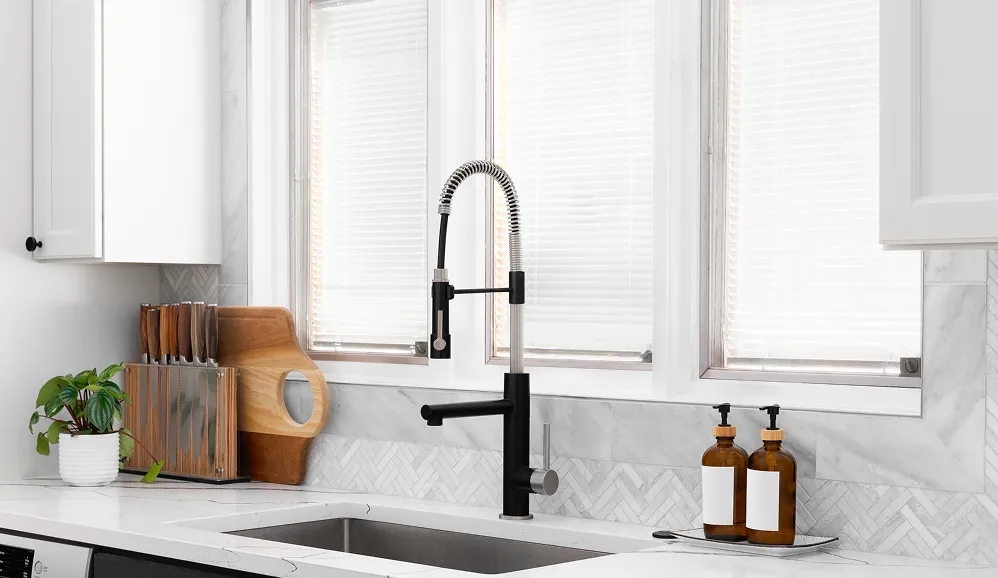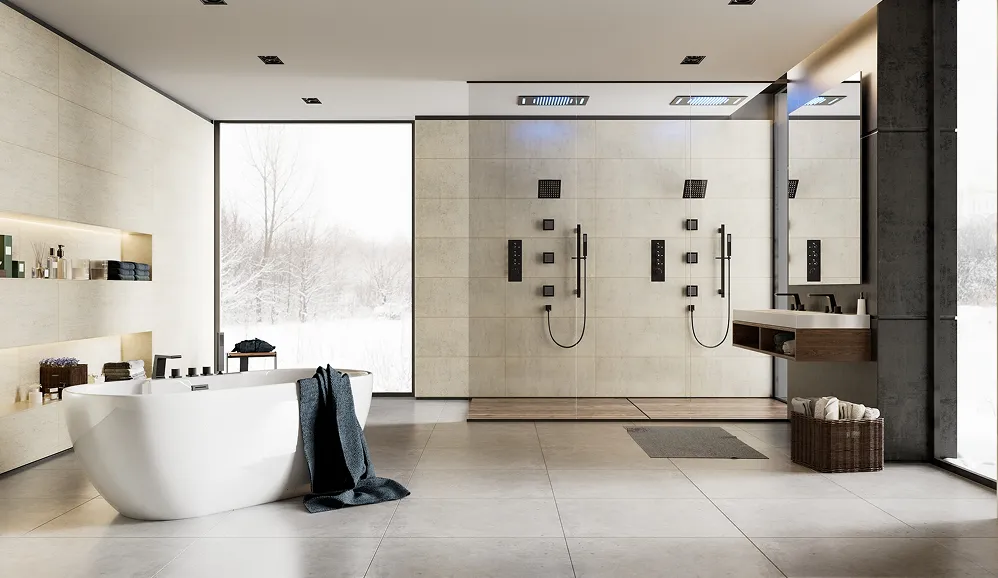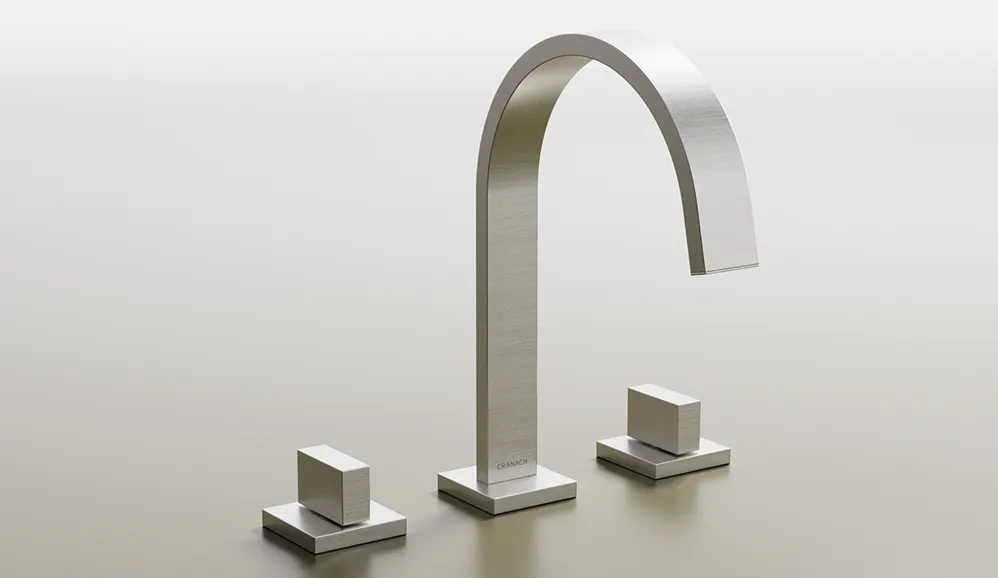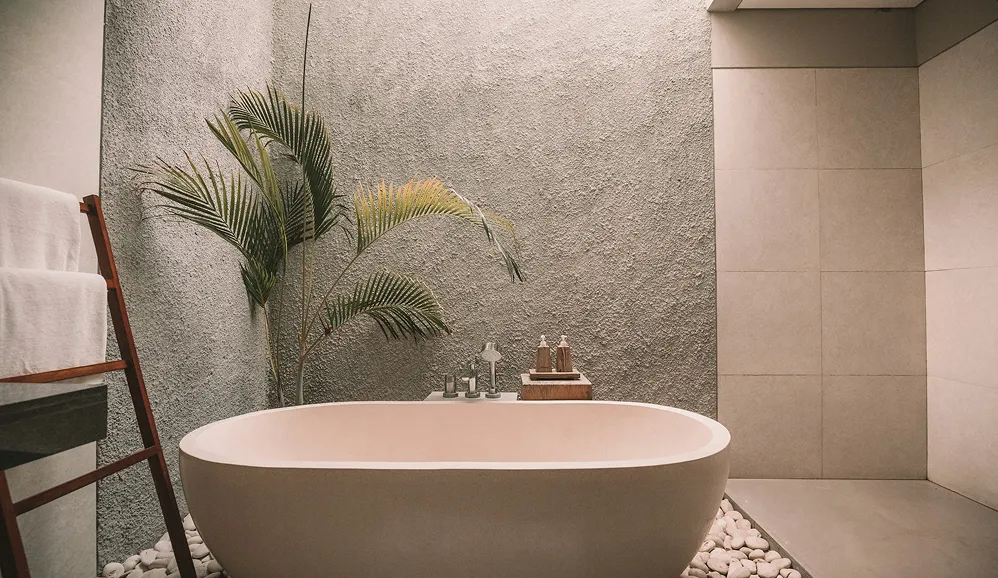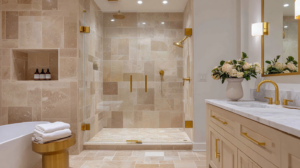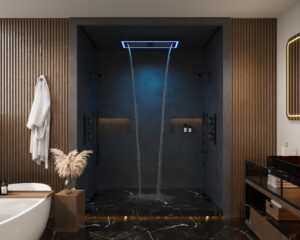Ever wonder how much water that daily shower actually uses? It’s something we do on autopilot, but the numbers might surprise you.
The average American shower uses about 17 gallons of water and lasts just over eight minutes. While that might not feel like much, this daily ritual adds up fast, making a real dent in both your utility bills and your environmental footprint.
The Surprising Truth About Your Shower’s Water Use
To really get a handle on how many gallons of water a shower uses, we have to start with the national average. From there, we can see how our own habits contribute to the bigger picture of household water consumption.
A detailed 2018 report painted a very clear picture. It found the average American shower clocks in at about 8.2 minutes, guzzling approximately 17.2 gallons of water each time. If you shower six times a week like most people, that’s over 103 gallons weekly. Annually? You’re looking at a staggering 5,336 gallons for just one person. You can dig into the full water usage findings to see the massive scale of it all.
How Shower Time Affects Water Use
The single biggest factor dictating your water use is simply how long you stand under the spray. Think of your showerhead as having a steady, constant flow—the longer the water is running, the more gallons pour out. It’s a direct relationship.
Even tacking on a few extra minutes can dramatically increase the amount of water you use. To put it into perspective, here’s a quick look at how the gallons pile up.
Water Used Per Shower by Duration
This table breaks down the total gallons used based on shower length. We’re assuming a standard, modern showerhead with a flow rate of 2.1 gallons per minute (GPM), which is pretty typical these days.
| Shower Duration (Minutes) | Total Gallons Used |
|---|---|
| 5 Minutes | 10.5 Gallons |
| 8 Minutes (Average) | 16.8 Gallons |
| 10 Minutes | 21.0 Gallons |
| 15 Minutes | 31.5 Gallons |
| 20 Minutes | 42.0 Gallons |
As you can see, the numbers climb quickly. Simply cutting your shower from ten minutes down to five could literally halve your water consumption for that shower. It’s a powerful reminder of how small, mindful changes can make a huge difference.
What Really Drives Your Shower’s Water Consumption
While looking at how time impacts your total water use is a great start, it’s only half of the story. To get the full picture of how many gallons of water a shower uses, you need to look at two simple but powerful factors: your shower’s flow rate and your personal habits.
Think of it like driving a car. How much fuel you burn depends on how fast you drive (your showerhead’s flow rate) and for how long you keep your foot on the gas (your shower duration). These two things work together to determine your final consumption.
One of the most important terms you’ll come across is Gallons Per Minute (GPM). This is just a simple measurement of how much water your showerhead releases every 60 seconds. A higher GPM is like a wider hose—it just pours out more water in the same amount of time.
The Role of Flow Rate
The GPM of your showerhead is the single biggest technical factor that’s going to influence your water bill. It’s easy to overlook, but the numbers don’t lie.
An older, inefficient showerhead might have a flow rate of 5 GPM or even more. In contrast, modern, water-saving models are often rated at 2.0 GPM or less, without sacrificing that feeling of a powerful spray.
The difference this makes is massive. A 10-minute shower with a 5 GPM head uses a staggering 50 gallons. Take that same 10-minute shower with a 2.0 GPM head, and you’re down to just 20 gallons.
Your showerhead’s flow rate acts as a multiplier for every minute you spend in the shower. A small change in GPM results in a large change in total water consumption over time, making it a critical component of home water efficiency.
How Your Habits Compound the Effect
This is where your daily routine comes into play. Lingering for just a few extra minutes to enjoy the warm water directly multiplies your consumption, all based on your showerhead’s GPM. It’s a simple equation.
Your choice of fixture sets the baseline for water use, but it’s your habits that determine the final amount. When selecting new fixtures, understanding this relationship is key. For those looking to upgrade, our buyer’s guide to luxury bathroom fixtures can help you make an informed choice that balances style with efficiency.
By getting a handle on both the technology and your habits, you can pinpoint exactly what to change to make a real difference.
How to Measure Your Shower’s True Flow Rate
While knowing the average is a good starting point, figuring out exactly how many gallons of water a shower uses in your home is a different story. It requires a more personal approach. You can stop guessing and find your showerhead’s true Gallons Per Minute (GPM) with a simple, practical experiment called the “bucket test.”
This hands-on method gives you a real-world number, not just a technical spec from a box.
The Bucket Test: A Quick Guide
To find your shower’s flow rate, you only need three things: a one-gallon bucket or jug, a stopwatch (your phone works perfectly), and your shower. The whole thing is incredibly straightforward and takes less than a minute.
Here’s all you need to do:
- Place the one-gallon bucket right under your showerhead.
- Turn the shower on to the water pressure and temperature you normally use.
- Start your stopwatch the moment water starts filling the bucket.
- Stop the timer as soon as the bucket is full.
Once you have your time, a quick bit of math gives you the GPM. For instance, if it took 24 seconds to fill the one-gallon bucket, your showerhead’s flow rate is 2.5 GPM (that’s 60 seconds / 24 seconds = 2.5).
But what if your water pressure feels a bit weak during this test? If that’s the case, you might want to look into how to increase water pressure in your shower to make sure you’re getting a true reading.
Your True Water Use: This simple calculation pulls back the curtain on your home’s water consumption. It replaces vague averages with a concrete number you can actually work with, empowering you to make conservation efforts that are tailored specifically to your shower.
This infographic breaks down how a showerhead’s flow rate and the length of your shower determine your total water use.
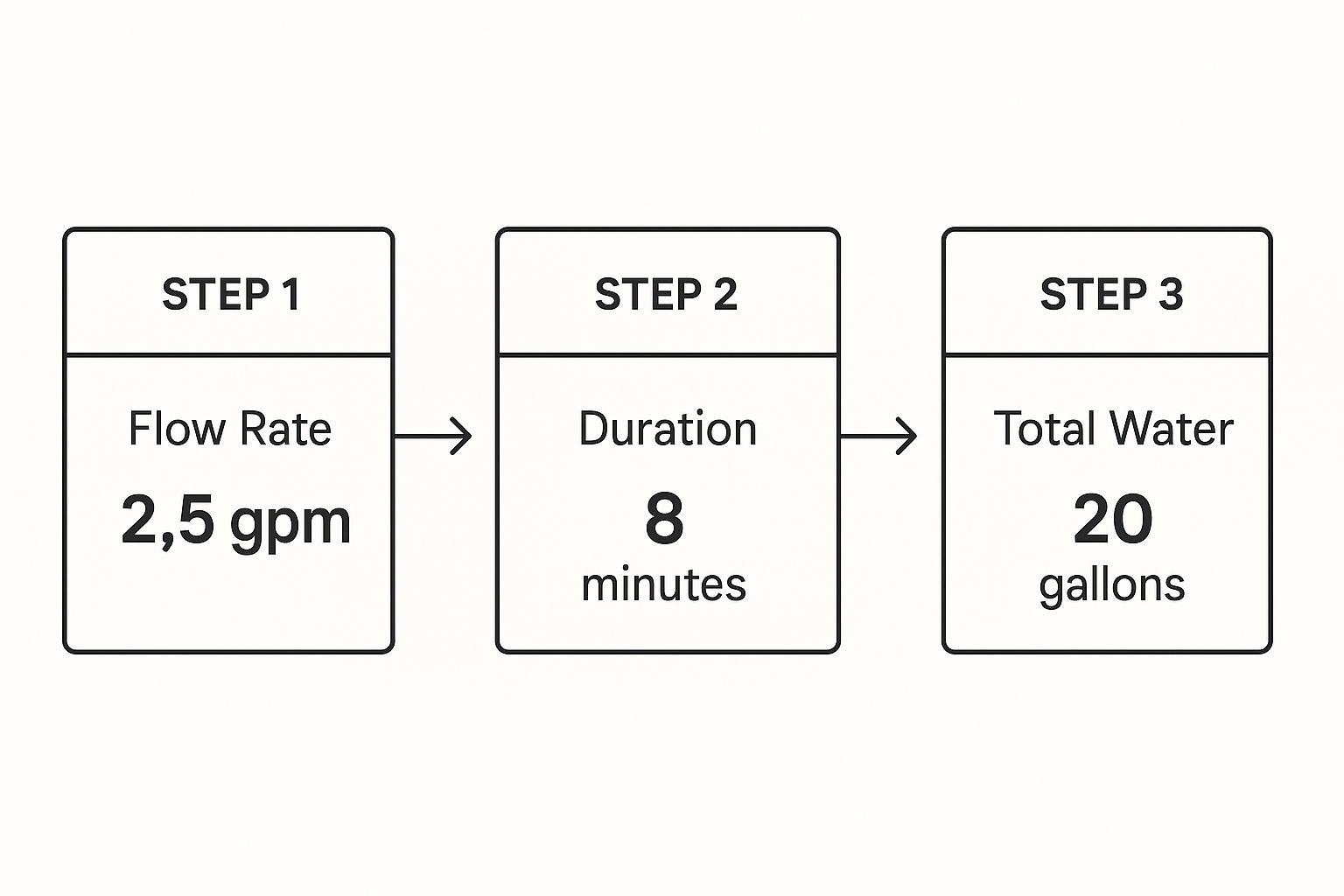
As you can see, a 2.5 GPM showerhead running for eight minutes will use a total of 20 gallons of water. Now you know exactly how to find your own numbers.
How Showerhead Technology Can Slash Your Water Use
The showerhead mounted in your bathroom holds more power over your water bill than almost any other fixture in your home. It’s true. A simple upgrade can dramatically lower how many gallons of water a shower uses, often without you ever feeling a difference in performance. The evolution of this technology is a story of smart, water-saving design.
Think of older showerheads as open floodgates. It wasn’t uncommon for models installed before the 1990s to pour out 5 gallons per minute (GPM) or even more. An eight-minute shower with one of those could easily send 40 gallons down the drain.
But times have changed. Modern standards set a much lower bar, with many government agencies now recommending high-efficiency models that use no more than 2.0 GPM.
The Science of a Better Shower
So, how do new showerheads deliver a satisfying, high-pressure experience with so much less water? The secret lies in smarter engineering, not a weaker flow. It all comes down to a couple of key innovations:
- Aeration: These showerheads work by infusing the water stream with tiny air bubbles. This clever trick increases the volume and pressure of the spray, making it feel powerful and full even though it’s using significantly less water.
- Laminar Flow: Instead of mixing water with air, these models create individual, perfectly formed streams of water. This design is fantastic for rinsing and provides a consistent flow that’s great for homes where steam and humidity are a concern.
Upgrading your showerhead is one of the single most effective conservation efforts you can make at home. The technology is designed to maintain that satisfying pressure while cutting water use by 50% or more compared to older fixtures.
This simple change directly impacts your utility bills and your home’s environmental footprint. If you’re considering making the switch, our guide on choosing a low-flow shower head offers extra insights to help you find the right fit for your bathroom. It’s a small investment with a huge payback.
Simple Habits to Conserve Water in the Shower
Okay, so you’ve got a handle on your showerhead’s flow rate and the tech behind it. That’s a huge first step. Now, let’s talk about the simple, everyday habits that can make a real dent in how many gallons of water a shower uses—and we’ll go beyond the obvious advice to just “take shorter showers.”
These small shifts in your routine can have a surprisingly big impact on your water consumption and, of course, your utility bills. You can save a significant amount of water without a major lifestyle overhaul or giving up that feeling of a great shower.
Adopt Smarter Showering Techniques
The easiest place to start is by changing how you use the water, minute by minute. One of the most effective tricks in the book is the “Navy shower.” It’s simple: turn the water off while you lather up with soap or work shampoo into your hair, then flip it back on to rinse. This one habit alone can easily cut your water usage in half.
Another powerful tool is a basic shower timer. Keeping a small, waterproof timer in your shower helps you stay mindful and stick to a goal, whether that’s five minutes or eight. Honestly, most people are shocked when they find out their “quick” showers are actually much longer than they think.
A showerhead with a built-in pause button offers the best of both worlds. It lets you instantly stop the flow while you lather, keeping your perfect temperature settings ready for when you need to rinse. This tiny feature makes saving water almost effortless.
Make Your Fixtures Work for You
Even the best habits can be sabotaged by fixtures that aren’t working efficiently. Over time, mineral buildup can mess with your showerhead’s spray pattern, forcing you to stay in longer just to get properly rinsed. To keep everything running at peak performance, it’s a great idea to learn how to clean your shower head with vinegar every so often.
Common Questions About Shower Water Use
Once you start thinking about how many gallons of water a shower uses, a whole new set of questions usually pops up. We get it. To help you piece it all together, we’ve tackled some of the most common questions with clear, real-world answers.
Which Uses More Water: A Bath or A Shower?
A standard bathtub can hold a surprising amount of water—up to 70 gallons, in fact. So, a full bath almost always uses far more water than your average shower.
For comparison, a typical eight-minute shower with a modern, efficient 2.1 GPM showerhead only uses around 17 gallons. You’d have to stay in the shower for over 30 minutes with that same fixture to match the water used in just one full bath. When it comes to daily water conservation, showering is the clear winner.
How Much Money Can I Save By Using Less Water?
The savings can be pretty significant. The EPA estimates that an average family can save about 2,700 gallons per year just by switching to a high-efficiency showerhead.
That simple change can trim a family’s water and electricity bills by over $70 annually. A big part of that is because your water heater doesn’t have to work nearly as hard. Of course, your exact savings will hinge on your local utility rates and how long you like to shower, but the impact is definitely there.
One of the biggest myths out there is that water-efficient showerheads give you a weak, unsatisfying spray. With today’s designs, that couldn’t be further from the truth.
Modern low-flow showerheads are engineered with smart technology like aeration, which mixes air into the water stream to create a full, powerful spray. Many people are surprised to find that a quality water-efficient model feels just as good—if not better—than an old, water-guzzling fixture. Keeping your fixture clean is also key to a great experience; you can find some helpful tips in our guide on how to clean a shower head. The goal of today’s technology isn’t to make you feel like you’re sacrificing anything. It’s to save a significant amount of water without you ever noticing the difference.
At Cranach, we believe a fantastic shower can be both luxurious and responsible. Our shower systems are built with advanced water-saving technology to give you an exceptional experience while helping you conserve resources. Upgrade your bathroom and embrace a cleaner, healthier, and more efficient shower today. https://cranachhome.com

